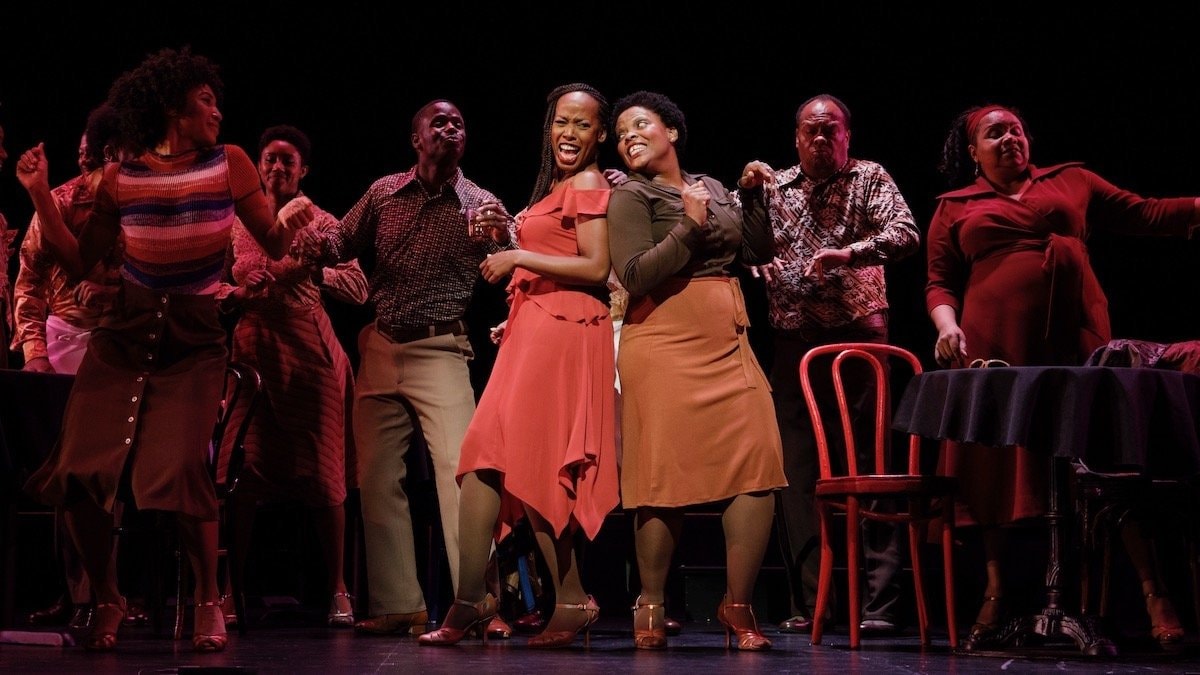
Funny Girl (US/UK), the hit musical about legendary entertainer Fanny Brice, opened at the Winter Garden Theatre on March 26, 1964. This year, Beanie Feldstein leads the cast in the show’s first Broadway revival. To celebrate the show’s return to Broadway, here are 15 Fun Facts about the original Broadway production!
1. “People” was almost cut.
During out-of-town tryouts, director Garson Kanin wanted to cut the song “People” from the show, saying it didn’t fit the character of Fanny. But star Barbra Streisand had already recorded the song for release as a pop single. Lyricist Bob Merrill said, “It has to be in the show because it’s the greatest thing she’s ever done.” Kanin conceded, and by the time the show opened in Boston, “People” was so well known that it earned applause during the show’s overture.
2. Marvin Hamlisch played the show.
The musical’s third rehearsal pianist was 18-year-old Marvin Hamlisch.
3. 41 songs composed for the musical were cut before Broadway.
Composer Jule Styne wrote a total of 56 separate pieces of music for Funny Girl. (Fifteen of them made it to the Broadway opening.)
4. The writers imitated Fanny Brice without directly quoting her work.
The creators of Funny Girl deliberately chose not to use any of Fanny Brice’s actual material, fearing that audiences would unfavorably compare the musical’s star to the original entertainer. Instead, they created new songs in the style of Brice’s hits, like “The Music That Makes Me Dance” after “My Man” and “Sadie, Sadie” after “Rose of Washington Square.”
5. Funny Girl was snubbed at the 1964 Tony Awards.
Funny Girl was nominated for eight Tony Awards, but – against a Hello, Dolly! onslaught – it didn’t win a single one.
6. Several directors were involved in the show’s inception.
The show went through several directors: Original director Jerome Robbins clashed with librettist Isobel Lennart and quit. Bob Fosse came in, but didn’t last long. Garson Kanin took over, but Barbra Streisand didn’t work well with him and insisted that Robbins return. In the end, Kanin was credited as director, with the “production supervised by” Jerome Robbins.
7. Isobel Lennart had a tough time.
Book writer Isobel Lennart called the creation of Funny Girl “The most horrible experience of my life.”
8. “You Are Woman” wasn’t always a duet.
During the show’s tryout, the song “You Are Woman,” a solo for Sydney Chaplin, was not going over well. Jerome Robbins asked the songwriters to write a countermelody for Fanny by adding lyrics to the existing accompaniment. They liked the idea, and Fanny’s counterpoint (“Isn’t this the height of nonchalance?”) made the song a hit.
9. Early drafts of the show were long.
Despite over 30 minutes of cuts on the road, Funny Girl was too lengthy when it opened in Boston in 1967. Lennart continued to edit her book and deleted another 30 minutes before the show moved to Philadelphia. Even after the cuts, the Broadway production ran nearly three hours.
10. Barbra wasn’t the only original Fanny.
Lanie Kazan was Barbra Streisand’s original understudy. Mimi Hines took over the role when Streisand left the show.
11. The show’s first title was My Man.
Fanny Brice’s son-in-law Ray Stark had commissioned an authorized biography of the entertainer, and several writers tried and failed to adapt her audio memoir into a workable script. Finally, screenwriter Isobel Lennart scored with her script, entitled My Man. Mary Martin read My Man and suggested that it be adapted into a stage musical.
12. At first, the team wanted Sondheim.
Stark and director Jerome Robbins first contacted Jule Styne and Stephen Sondheim as composer and lyricist. Sondheim declined, saying, “I don’t want to do the life of Fanny Brice with Mary Martin. She’s not Jewish. You need someone ethnic for the part.”
13. Barbra Streisand wasn’t the creatives’ first choice.
Streisand was not the first choice to play Fanny Brice… not by a long shot! Mary Martin was first, followed by Anne Bancroft, Eydie Gormé, Carol Burnett and several others.
-
After Mary Martin backed out, Styne and Bob Merrill wrote the score with Anne Bancroft in mind, but she also declined.
-
Eydie Gormé was also up for the part, but she would only play Fanny if her husband Steve Lawrence played Nicky Arnstein.
-
Carol Burnett refused the role, saying, “I’d love to do it, but what you need is a Jewish girl.”
-
Jule Styne remembered Barbra Streisand, a relatively unknown young singer/actress from I Can Get It for You Wholesale (US/UK), and went to see her club act at the Bon Soir in Greenwich Village. He was so taken by her that he returned 27 times! He convinced Jerome Robbins to see the act, and Robbins instantly knew she was perfect.
14. Funny Girl led to Smash.
Garson Kanin’s 1980 novel Smash was loosely based on his experience directing Funny Girl. The novel was itself the basis, in part, for the 2012 NBC series Smash.
15. Funny Girl made history.
Despite its rocky inception, Funny Girl opened to positive reviews and became a smash hit. The show ran for 1,348 performances, then making it one of the longest-running musicals in Broadway history.
These and many more Funny Girl facts can be found in Theodore Taylor’s 1979 book, JULE: The Story of Composer Jule Styne.
For more information about licensing a production of Funny Girl, visit Concord Theatricals in the US or UK.

Recommended Shows for Drama Festivals

The Truth Behind… The Normal Heart

